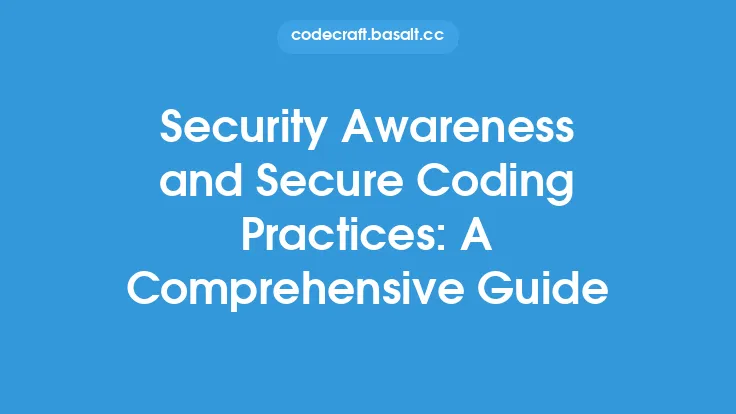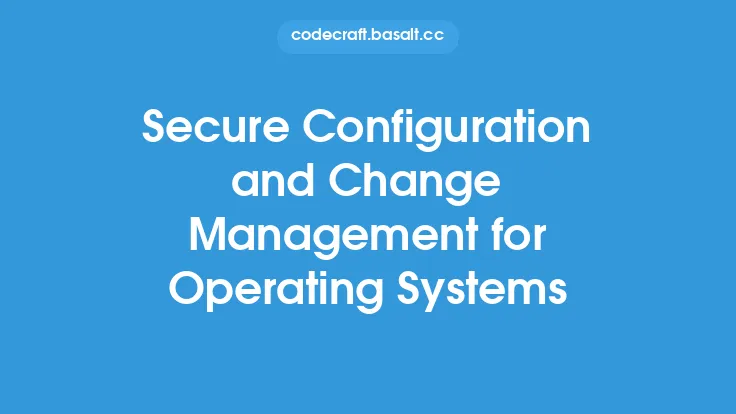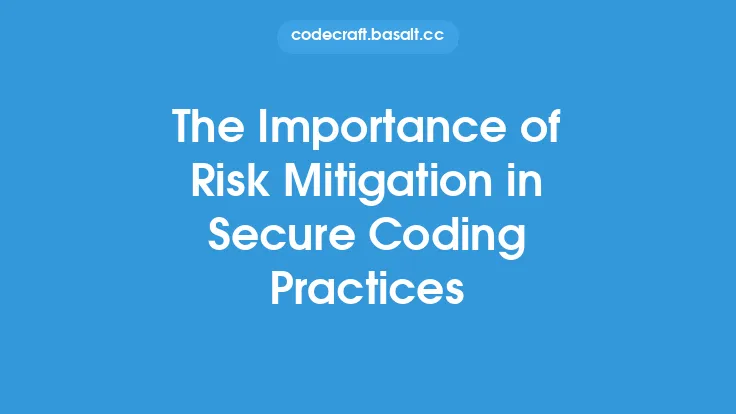Secure coding practices are essential for developing reliable and secure operating systems. The primary goal of secure coding is to prevent vulnerabilities and ensure the confidentiality, integrity, and availability of data. In this article, we will delve into the best practices for secure coding in operating system development, highlighting the importance of secure design, implementation, and testing.
Secure Design Principles
Secure design principles are the foundation of secure coding practices. These principles guide the development of operating systems, ensuring that security is integrated into every aspect of the system. Some key secure design principles include:
- Least Privilege: This principle states that a process or user should only have the privileges necessary to perform its intended function. This reduces the attack surface and prevents malicious code from exploiting elevated privileges.
- Separation of Privilege: This principle requires that multiple conditions or privileges be met before a process or user can perform a sensitive operation. This makes it more difficult for an attacker to exploit a single vulnerability.
- Economy of Mechanism: This principle advocates for simple and intuitive design, reducing the complexity of the system and making it easier to analyze and test for security vulnerabilities.
- Fail-Safe Defaults: This principle ensures that the system defaults to a secure state in the event of a failure or error. This prevents an attacker from exploiting a system that is in a vulnerable state.
Secure Coding Techniques
Secure coding techniques are essential for implementing secure design principles. Some key techniques include:
- Input Validation: This involves validating all input data to prevent buffer overflows, SQL injection, and other types of attacks. Input validation should be performed on all data, including user input, network data, and data from other systems.
- Error Handling: This involves handling errors and exceptions in a secure manner, preventing an attacker from exploiting error messages or crash dumps. Error handling should be implemented to prevent information disclosure and ensure that the system remains in a secure state.
- Secure Memory Management: This involves managing memory securely, preventing buffer overflows and other types of memory-related vulnerabilities. Secure memory management techniques include using safe functions, validating buffer sizes, and implementing address space layout randomization (ASLR).
- Secure Coding Libraries: This involves using secure coding libraries and frameworks, such as those that provide secure string manipulation, encryption, and authentication functions. Secure coding libraries can help prevent common vulnerabilities, such as buffer overflows and SQL injection.
Secure Implementation
Secure implementation is critical for ensuring the security of an operating system. Some key considerations include:
- Secure Coding Standards: This involves establishing and enforcing secure coding standards, such as those that prohibit the use of insecure functions or require the use of secure coding libraries.
- Code Reviews: This involves performing regular code reviews to identify and fix security vulnerabilities. Code reviews should be performed by experienced developers and security experts.
- Testing and Validation: This involves testing and validating the operating system to ensure that it meets secure coding standards and is free from vulnerabilities. Testing and validation should include fuzz testing, penetration testing, and other types of security testing.
- Configuration Management: This involves managing the configuration of the operating system, ensuring that all components are properly configured and secured. Configuration management should include secure configuration defaults, secure configuration options, and secure configuration management tools.
Secure Testing and Validation
Secure testing and validation are essential for ensuring the security of an operating system. Some key considerations include:
- Fuzz Testing: This involves testing the operating system with invalid or unexpected input, identifying vulnerabilities and ensuring that the system can handle errors and exceptions securely.
- Penetration Testing: This involves simulating attacks on the operating system, identifying vulnerabilities and ensuring that the system can withstand common attacks.
- Security Scanning: This involves using security scanning tools to identify vulnerabilities and ensure that the system is properly configured and secured.
- Compliance Testing: This involves testing the operating system against relevant security standards and regulations, ensuring that the system meets all necessary compliance requirements.
Secure Maintenance and Update
Secure maintenance and update are critical for ensuring the ongoing security of an operating system. Some key considerations include:
- Patch Management: This involves managing patches and updates, ensuring that all security vulnerabilities are addressed in a timely and secure manner.
- Vulnerability Management: This involves identifying and addressing security vulnerabilities, ensuring that the system is properly configured and secured.
- Configuration Management: This involves managing the configuration of the operating system, ensuring that all components are properly configured and secured.
- Security Monitoring: This involves monitoring the operating system for security-related events, identifying and responding to security incidents in a timely and effective manner.
In conclusion, secure coding practices are essential for developing reliable and secure operating systems. By following secure design principles, using secure coding techniques, and implementing secure coding standards, developers can ensure that their operating systems are secure and reliable. Regular testing and validation, secure maintenance and update, and ongoing security monitoring are also critical for ensuring the ongoing security of an operating system. By prioritizing security and following best practices, developers can create operating systems that are secure, reliable, and trustworthy.





